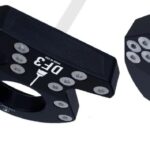Join Our Senior Golfers Newsletter!
Sign up today and receive your free Golf After 60 Bonus Stretch Guide!
Golf is a sport that spans generations, and as golfers age, the equipment they use becomes increasingly vital in maintaining and improving their performance on the course. Among the key components of a golf club, the shaft plays a crucial role in determining the feel, trajectory, and overall effectiveness of a shot. For senior golfers, selecting the right golf shaft becomes a paramount consideration to enhance their playing experience. In this comprehensive guide, we will delve into the intricacies of golf shafts, exploring the key factors to consider and identifying some of the best shaft options for senior golfers.
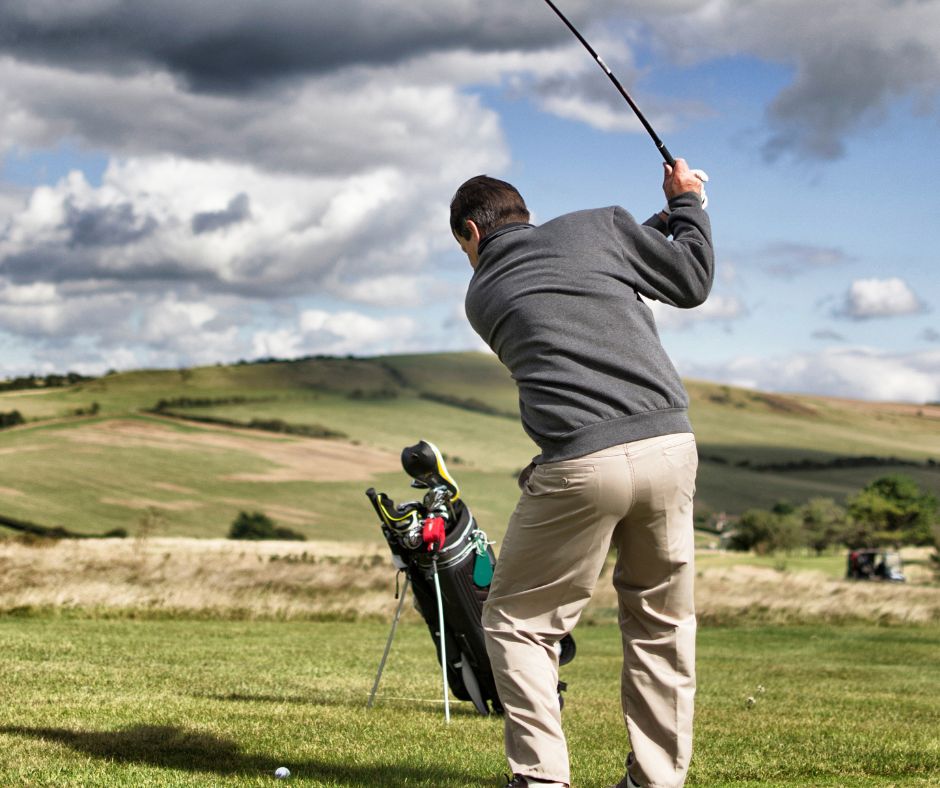
Golf Shafts: The Best Shafts for Senior Golfers
Before delving into specific recommendations, it’s essential to understand the fundamental aspects of golf shafts. The shaft is the long, tapered tube that connects the golfer’s hands to the clubhead. It plays a vital role in transmitting energy from the golfer’s swing to the clubhead, influencing the ball’s trajectory, spin, and overall performance. Several factors contribute to the characteristics of a golf shaft, and understanding these can guide senior golfers in making informed decisions.

Golf shaft options are available for senior golfers.

Graphite Shafts: Lightweight and Forgiving
When it comes to senior golfers, graphite shafts are often the way to go. These shafts are made from a composite material, which makes them lighter than traditional steel shafts. The lightweight nature of graphite shafts allows for increased swing speed, resulting in greater distance off the tee and improved overall performance.
Moreover, graphite shafts have inherent vibration-dampening properties, making them more forgiving on off-center hits. This forgiveness offers senior golfers more consistency and helps reduce the shock and strain on the body, making the game more enjoyable and comfortable.
Most manufacturers offer a specific “senior” flex option, which is designed with senior golfers in mind. These shafts have a softer, more responsive feel, enabling better control and increased distance. It’s essential to try out different flex options and work with a club fitter or golf professional to determine the ideal flex for your swing.
There are generally five types of shaft flex: ladies, senior, regular, stiff and extra stiff. If you have a flex that doesn’t match your swing speed then you’re probably losing distance and/or accuracy. An incorrect shaft flex becomes more noticeable the longer the club gets.
(ie. with the driver)
By incorporating a shaft with a low kick point, senior golfers can maximize their carry distance and achieve greater accuracy. This higher launch angle can also improve performance from difficult lies and rough, making the game more enjoyable and less challenging.

The counterbalance feature enhances stability during the swing, reducing the likelihood of erratic movements and promoting a more consistent and controlled release. This increased stability improves accuracy and can provide senior golfers with greater confidence in their swings, leading to improved performance on the course.
Working with a professional club fitter or golf instructor allows you to assess various options and find the ideal shaft that optimizes your performance. Custom fitting takes into account factors such as swing speed, tempo, transition, and release point, making the process highly personalized and tailored to your game.
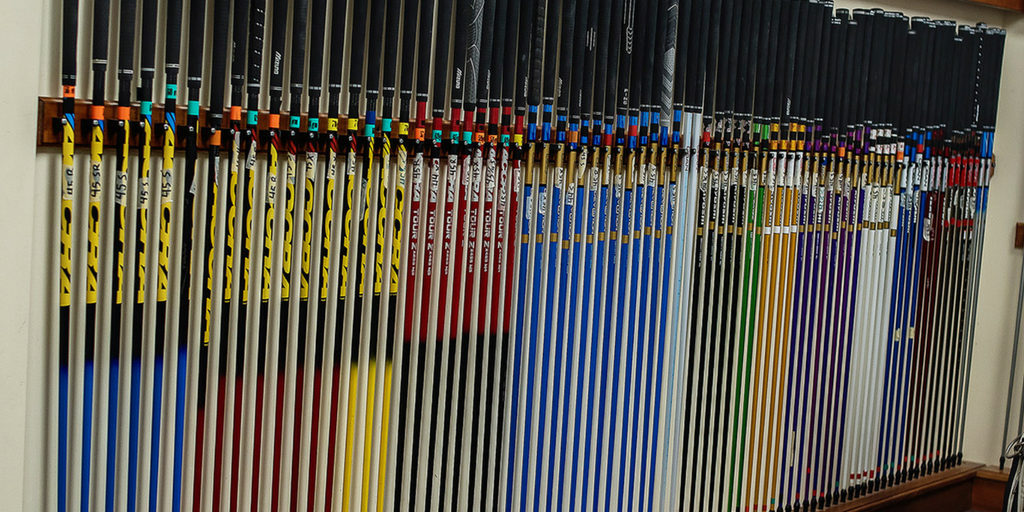

MODERN GUIDE TO GOLF CLUBFITTING book shows a modern approach to how to properly fit golf clubs in a logical sequence. Applicable to professional club fitters down to those golfers that simply want to learn more about the equipment they play.
Here are a few of the most popular shafts for senior golfers:

Fujikura Ventus Blue: The Ventus Blue is a lightweight and flexible shaft that is designed for golfers with moderate swing speeds. It has a high launch profile and moderate spin rate, which makes it a good option for senior golfers who want to hit the ball high and long.

UST Mamiya Recoil 460: The Recoil 460 is another lightweight and flexible shaft that is popular with senior golfers. It has a slightly lower launch profile than the Ventus Blue, but it still has moderate spin. This makes it a good option for senior golfers who want to hit the ball high and with less spin.
We may earn a commission, at no additional cost to you.

Project X EvenFlow Riptide: The EvenFlow Riptide is a slightly heavier shaft than the Ventus Blue or Recoil 460, but it is still flexible and easy to swing. It has a lower launch profile than the Ventus Blue, but it still has moderate spin. This makes it a good option for senior golfers with slightly faster swing speeds who want to hit the ball long and straight.

Diamana D+ Limited: The D+ Limited is a heavier shaft than the EvenFlow Riptide, but it is still flexible and easy to swing. It has a lower launch profile and less spin than the EvenFlow Riptide. This makes it a good option for senior golfers with faster swing speeds who want to hit the ball long and straight with minimal spin.
We may earn a commission, at no additional cost to you.

Aldila Rogue Silver: The Rogue Silver is a lightweight and stiff shaft that is designed for golfers with fast swing speeds. It has a low launch profile and high spin rate, which makes it a good option for senior golfers who want to hit the ball far and with a lot of spin.
In addition to these specific shafts, there are a number of other shafts that are well-suited for senior golfers. If you are unsure which shaft is right for you, it is a good idea to consult with a golf professional. They can assess your swing and recommend a shaft that is right for your needs.
Here are some additional tips for choosing the best shafts for senior golfers:
In conclusion, selecting the best golf shafts for senior golfers involves considering key factors such as graphite construction, senior flex, low kick point, counterbalancing, and custom fitting. By incorporating these elements into your club selection process, you can find the perfect shaft that maximizes your distance, accuracy, and overall enjoyment on the golf course. Remember, the right shaft can play a significant role in enhancing your performance and helping you continue to excel and savor the game of golf for years to come!
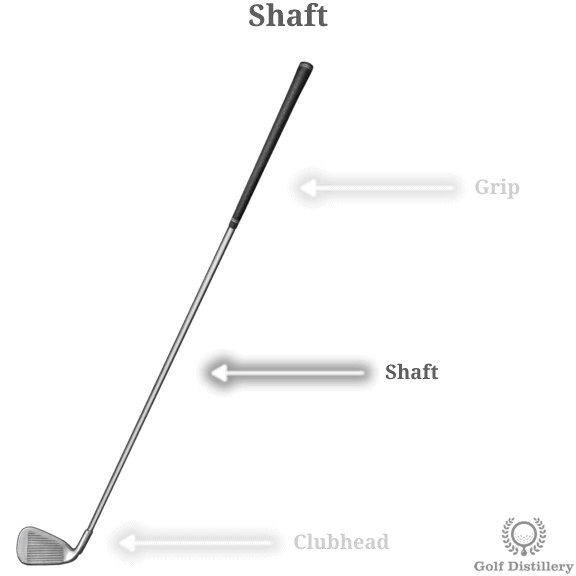
The shaft is the part of the club that connects to the clubhead. It is located in the middle of the club, between the grip and the head. The grip covers the top part of the shaft whereas the bottom end is inserted into the clubhead through the hosel.

Shafts are offered in a variety of flex levels to accommodate different swing speeds.
Golfers with fast swing speeds will favor stiff shafts or even extra stiff in some instances. Golfers with average swing speeds will favor regular shafts and finally those with slower will opt for flexible, or senior flex ones.
A stiff shaft will tend to send the ball on a lower flight path and a flexible (or senior) shaft will send it on a higher flight patch, all other things being equal.
Acting as a lever, the shaft is what allows a golfer to hit the ball over great distance simply by using the rotation of his body (hips, shoulders and arms).
The distance between the golfer and the ball – through the shaft – is what allows for the multiplication of the force onto the golf ball.
Generally speaking, the longer the shaft, the bigger the lever and the longer distance a ball could travel.

As is the case for most golf grips, shafts are also tapered.
This means that they are wider at the top near the grip and progressively become smaller in diameter as they approach the clubhead.
While this progression is completely smooth on graphite shafts, the reduction in width is visible in the metal variety through clear reductions in diameters at regular intervals.
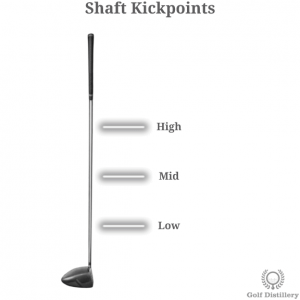
On top of being offered in a variety of flex levels, shafts are also offered with different kick points.
The kick point – or bend profile – refers to the region of the shaft where it bends the most.
A shaft with a high kick point will bend most at a higher point than the middle and should help send the ball on a lower ball flight. Conversely, one with a low kick point will bend most below the middle of the shaft and will help send the ball on a higher ball flight.

Shafts also vary in lengths; the driver usually has the longest and the putter the shortest. For the clubs situated in the middle of those, generally, the shaft length will decrease as the loft will increase. So for example, a 5-iron will be a bit longer than a 6-iron, which will be longer than a 7-iron, and so on.
As the golfer gets nearer to the ball so does his ability to control where the ball will go, all other things being equal. Among other factors, this explains why a golfer will usually be more precise using a 9-iron – which has a shorter shaft – than with a driver – which as the longest.
Additionally, the length of a shaft can be fine tuned if a golfer decides to buy custom fitted clubs. For example, a tall golfer – say 6’3” – may find it more comfortable to use clubs whose shafts are 0.5” to 1” longer than the default sizes.
Conversely, a golfer with an extremely fast swing speed may find he is able to better control his driver when it is fitted with a shaft that is shorter than usual. A shorter shaft would position him closer to the ball for more control, at the cost of slightly less leverage and ultimately less distance.
